Tubeless bike tires are a relatively new development in the cycling world.
They became popularized in the early 2010s and have since become a popular option for cyclists who want to enjoy more comfort, control, and speed.
However, tubeless bike tyres still lack some features that non-tubeless tire models offer.
In this guide, we’ll cover the basics of what you need to know about these tires and how to set them up properly so that your first ride is a safe and enjoyable one!
Overview — Tubeless Bike Tires
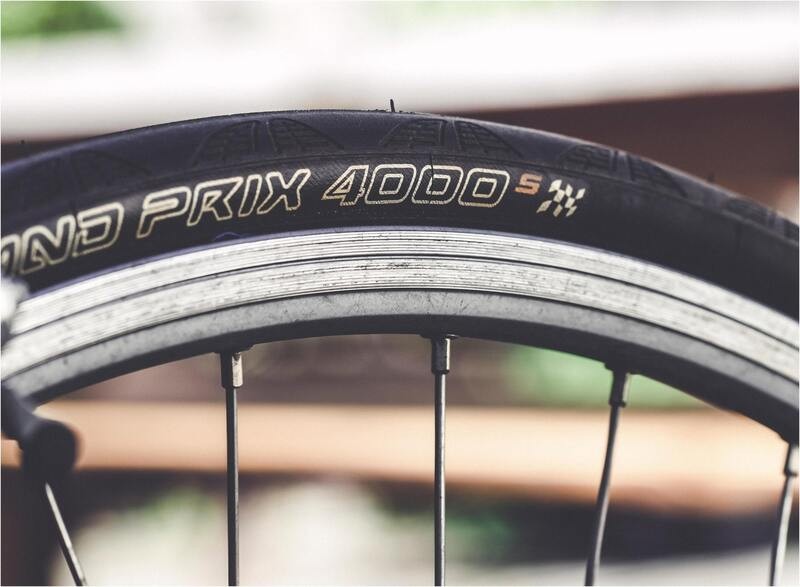
A Tubeless bike tire is a new type of tire that is made up of two layers.
The top layer is a solid rubber compound, and the bottom layer is a liquid rubber compound.
The solid rubber compound forms the outside of the tire, and the liquid rubber compound forms the inside of the tire.
When you put the tire on your bike, fill it with air using a pump.
This air pressure fills up the space between the two layers of rubber and prevents them from coming into contact with each other.
As air pressure escapes from the tire, it pushes the liquid rubber compound up toward the solid rubber compound, creating a seal between them.
This means that there is no need for an inner tube when using tubeless tires.
Tubeless tires have some advantages over standard tubes.
They’re lighter, and they’re easier to mount and remove. There’s no need to take the wheel off the bike to change the tire; you just unscrew the standard tire valve and fit the tubeless one.
So overall, they’re a more efficient and lighter option that improves ride quality to a great extent.
Top 3 Picks for the Tubeless Tires
In today’s vast marketplace, making informed purchasing decisions can be challenging. Our curated list of top 3 picks for tubeless bike tyres helps you navigate this complex landscape with confidence. Based on comprehensive evaluations, we’ve selected the best three tubeless bike tires that align with your unique needs and preferences. Whether you’re a tech enthusiast, homebody, or outdoor adventurer, we’ve got you covered. Our top 3 picks represent the pinnacle of innovation, quality, and satisfaction, ensuring you’ll find the perfect product for your cycling.
Last update on 2025-08-26 / Affiliate links / Images from Amazon Product Advertising API
Tubeless Rim vs. Tubeless Ready — What’s the Difference
If you’re wondering what makes a tubeless-ready different from a tubeless rim, the answer is simple: a bead lock design. Tubeless-ready rims feature bead locks that help seal the tire to the rim after inflation.
This makes it easier to get the tire mounted and ready for use and helps to prevent air from seeping out of the tire while you’re riding.
This is an important feature for cyclists who want to avoid having to stop every few miles to pump up their tires.
The tubeless-ready tire is also available in a variety of sizes and types, so there’s sure to be a model that fits your needs. And because the tire is designed with a low profile, it’s perfect for use on hybrid bikes or road bikes that have smaller frames.
This technology has become more popular in recent years as riders have become more interested in trying out new riding styles and techniques.
Many riders prefer tubeless tires for two main reasons: they’re stiffer and more responsive than traditional tires and offer better traction on wet roads or surfaces.
With a tubeless setup, there’s no need to worry about air pressure – all you need is a compatible valve and tube. Simply remove the valve from your bike’s wheel, insert the tube into the valve, and screw it back onto the wheel.
With this, you’re ready to ride!
How does a Tubeless Bike Tire work
Tubeless bicycle tires work by using a sealant to retain air between the rim and the tire. This creates a much smoother ride because there is no need for a traditional tire inner tube.
The sealant also prevents air from leaking out, which means that you don’t have to worry about flat tires.
Hence, you may also enjoy riding at low pressures.
A Glossary of Tubeless Tire Terminology
Listed below are some of the most commonly used terms in the tubeless tire world. The purpose of this is to help you better understand the concepts and terminologies discussed in the article.
Tire Bead
The tire bead refers to the edges of the tire that rest on the wheels. They can be made from a variety of materials, but all have one thing in common – they’re designed to keep air from leaking out of the tire and onto the road.
Tubeless-ready tires use a special sealant to attach the bead to the rim, and it’s important that this sealant is properly applied so that air doesn’t escape. If the tire bead isn’t seated tightly on the rim, air can leak out and cause your bike to ride poorly.
Tubeless Rim Tape
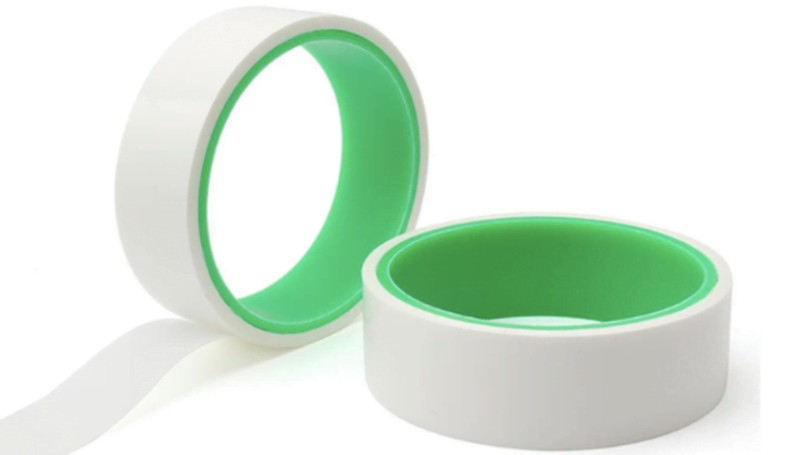
Rim tape protects your inner tube from being punctured by your spokes and spoke holes by wrapping cloth, PVC, or nylon tape around your bike rim.
These tapes come in a variety of widths to fit most rims and can be easily applied with a wide variety of tools. Rim tape can be a cheap and effective way to protect your bike’s rim from damage due to punctures.
It also helps keep your tire rolling smoothly and prevents debris from getting inside your tire.
Tubeless Valve
Tubeless valves work on the same principle as regular valves – when air pressure is reduced, the valve opens to allow the gas to escape.
However, in tubeless tires, air pressure is maintained by a rubber base at the back of the valve since there is no inner tube.
This small base is also responsible for injecting air into the tire when inflated, ensuring that it has enough air to function correctly.
For a tubeless valve to work precisely, it needs to be mounted on a bicycle in such a way that gravity will help keep the rubber base inflated.
If you’re using a traditional tube-type valve, you’ll need to use a pump to inflate your tires and keep the pressure high enough so that the tubeless valve will operate properly.
Overall, tubeless valves are an improvement valve over traditional valves in terms of performance and durability.
They’re particularly well-suited for mountain bikes, as they don’t require any extra tools or inflating accessories and are relatively simple to install.
Universal System Tubeless Rims
Universal System Tubeless rims are a new design from Mavic.
It has a hooked edge along the perimeter of the rim so that it can make a seal with tires that are specially designed for it. This system eliminates the need for valves or tubes, making it a perfect choice for cyclists who want to upgrade to tubeless tires.
Many bike manufacturers are using this system to make their tubeless tires.
It uses a cartridge that fits inside the tire valve. When inflated, the cartridge expands and creates a seal with the tire’s sidewall.
This prevents air from escaping, making it possible to use tubeless tires without having to use a tube.
Tubeless Sealant
A tubeless sealant can be described as a liquid that is designed to seal small holes in the casing of a tire and therefore prevent it from puncturing.
The sealant is injected into the punctured tire and hardens, forming a protective barrier against air and grit. Tubeless sealant can be used on any type of tire, including road, mountain, gravel, or cyclocross tires.
To use tubeless sealant, first, you must remove the bike’s wheel. Then you put the tire over the valve stem of the spare tire and push it down so that the bead lies on top of the sealant.
Reattach the wheel to the bike, ensuring the axle is square with the frame. Finally, you insert a Presta or Schrader valve into the hole in the wheel where the tire goes and screw it on tight.
Tubeless sealant is available in two types: open-cell and closed-cell. Open-cell tubeless sealant works well on low-grit roads but doesn’t last as long as a closed-cell tubeless sealant.
Tire Casing
Tire casings consist of the bead, belt system, sidewalls, body plies, and inner liners. Overall, everything except the tread is found in the casing.
The casing is made up of several layers that are bonded together with adhesives. The most common type of adhesive used in casings is hot melt adhesive (HMA). The casing is designed to protect the tread and other components of the tire from damage.
It also provides a platform for the installation of the belt system and other components of the tire. The casing is typically made from a variety of materials, including natural rubber, synthetic rubber, and plastic.
The casing can be made in a variety of shapes and sizes to fit different types of tires. It also can be customized to create special effects, such as flames or dragons.
Tubeless Clinchers
Tubeless tire clinchers have a similar general shape to conventional clinchers but lack a rim tube in their interiors. Instead, a layer is put into the tire casing to help it remain airtight.
The rim and tire beads are different in shape from traditional seals, with interlinked profiles that provide sealing under pressure, similar to how sandwiches are closed.
The differences between these wheels are not the only differences. Because tube-less tires hold air, they require complete sealing.
Do I need Special Tires & Rims to go Tubeless
It is important to note that tubeless tires require the use of specially formulated tires and rims to create the best and safest results.
A tubeless tire’s rim is padded with stretchy material to prevent airflow from entering during periods of stress.
There is a wide range of styles when it comes to rims. However, they usually contain central channels so that fitting is easier.
Some of the more sophisticated models feature beaded hooks that are intended to protect the tires from damage; although hook-less rims are just as common, some brands promote this feature as an advantage in their designs.
Merits & Demerits of Switching to Tubeless Bike Tires
Bicycle tubeless tyres offer a wide array of benefits to bike riders, making them an attractive option. Let us discuss the pros and cons of tubeless bike tires in detail.
Advantages of Tubeless Bike Tires
Come on, let’s dig into some of the major advantages that we receive with tubeless tire use.
1. Tubeless Technology
Tires with tubeless technology are quicker and more responsive than traditional tires, making them a favorite choice among riders who want the best possible handling.
One of the significant profits of tubeless technology is that it eliminates the need for tubes. This can be huge savings for riders who have problems with getting tubes replaced or who simply prefer not to use them.
Overall, this technology is fast, efficient, and easy to use, which means that it’s perfect for anyone who wants an excellent cycling experience.
2. Negligible Flat Tyre Cases
A rare flat tire case is making tubeless tires more and more popular.
This is because traditional tire systems use metal tubes, while tubeless tires use a kind of sealant injected into the tire’s sidewall.
This sealant creates an airtight seal between the tire and the tube, preventing air from entering and causing a flat tire.
While it’s pretty rare to get a flat tire when you have a tubeless setup, you can still do some things to minimize your chances.
First and foremost, make sure your tires are properly inflated. Underinflation can cause small holes in the tires that can lead to flats.
Second, make sure you have correctly fitted tubes. Many times minor cuts or holes in the tubes can allow air to escape and cause a flat.
Finally, be sure to inspect your tires for any signs of damage or wear regularly. This will help you identify any potential problems before they become big problems.
3. Low Rolling Resistance
Tubeless tire technology can help reduce rolling resistance by using less air pressure, improving the vehicle’s rolling characteristics.
Basically, when the air pressure in a tire is lower, it creates a less dense atmosphere that allows for more air to flow through the tire. This results in a smoother ride, as well as improved handling and braking.
The low air pressure also helps the tire to retain its shape, which reduces the amount of bouncing and thumping that you experience while driving.
4. Opportunity to Ride on Lower Tyre Pressures
Today’s riding conditions can place you at a higher risk of getting pinched flats, where an inner tube gets pinched against the rim and punctures.
Tubeless tire technology removes this risk by allowing you to run pressures slightly lower than traditional tire pressures since you don’t have to worry about pinch flats.
This means that they are a good option for riders who want to reduce their chances of crashing.
5. No Inner Tube
The use of tubeless tires has revolutionized the way we approach bicycle transport, and they require no inner tubes.
Have you ever wondered why it is so?
Inner tubes can cause a puncture when placed inside tubeless tires due to the roughness of the tire.
Tubeless tires use air pressure to seal the tire, so if there is a puncture, air will escape from the tire and cause an uncontrolled spin. The risk of this happening is heightened if you are riding on an uneven surface or if you are cornering.
This is why tubeless tires are designed with no inner tubes.
Disadvantages of Switching to Tubeless Bike Tyres
Nothing is perfect in this world. If you have pros to something, then it has cons too. The same saying goes for tubeless tires because they also have some flaws that can make a rider think twice before investing their hard-earned money into them.
So, let’s check the costs of switching to a tubeless tire to help you make an informed decision for yourself.
1. Costlier
The technology that goes into creating tubeless-ready tires and wheels is expensive, and as a result, they generally cost more than traditional tires and wheels.
Tubeless tires are especially expensive, as the process of making them requires special machines and techniques.
Additionally, the materials used in creating tubeless tires are often more expensive than those used in traditional tires.
However, many riders believe that the added convenience and performance benefits justify the expense.
Tubeless tires are especially useful on lightweight bicycles, where they provide a higher level of responsiveness and cornering stability.
2. Require Perfectly Seated Valve Stems
Tubeless tire technology requires perfectly seated valve stems.
If the stems aren’t seated properly, air can escape from the valves, and your tire will not be inflated.
This is especially dangerous on wet roads where an improperly inflated tire can explode, leaving you stranded.
Here are five tips to ensure your tubeless tire installation is a success:
- Ensure the valve stems are appropriately tightened before installing the tire. Over-tightening the valve stems can cause them to become loose over time, which can lead to air leakage.
- Inspect the tire for any signs of damage or wear. If there is anything about it that doesn’t seal, it is going to leak, and you won’t have an inflated tire.
- Clean and dry the area around the valve stem before installation. This will help ensure a smooth and secure fit when installing the tire.
- Route the valve stem carefully so that it doesn’t contact any other objects in the vehicle. Getting excess air into the tire can lead to problems down the road.
- Double-check that all the air has been removed from the system before inflating the tire. Overinflating a tubeless tire can cause it to burst, creating a mess and unwanted expenses.
3. Need to Pump Up Frequently
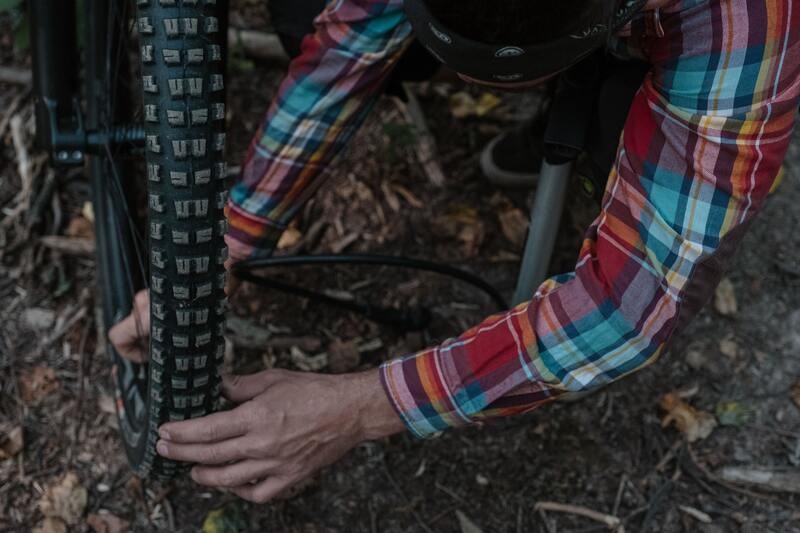
Tubeless tires require the same level of care and attention as tubed tires to ensure optimum performance.
The most common cause of tire failure is underinflation, which can be caused by a variety of factors, including riding habits, terrain, and weather conditions.
It is important to check your tire pressures before every ride to ensure that they are at their correct levels.
Overinflation can cause significant damage to your tires, so it is important to pay close attention to your tire pressure readings. If you notice any changes in your tire pressure readings over time, it is advisable to check them again.
4. Sealent Problem
Sealant is a sticky substance that is used on rubber or plastic surfaces to keep them from becoming dry and brittle. It is typically applied to tires and wheel rims.
If you’re like most drivers, you probably think of a sealant as a quick and easy way to keep your tires in good condition.
While sealant is an important part of your tire maintenance routine, it’s also one of the messiest items you’ll use. It is necessary to reapply the sealant periodically, usually every few months, since it gradually dries out.
If you don’t keep it properly refreshed, your sealant will start to crack and eventually wear out. To refresh your sealant, first, make sure that the tire is properly inflated.
Then, use a siphon to remove any old sealant from the tire’s surface. Finally, apply fresh sealant using a syringe or a brush. Be sure to use enough sealant to cover the tire’s circumference.
Once applied, wait until the sealant has dried before driving.
Why Tubeless Bike Tires are gaining massive popularity day by day
Tubeless bike tires are quickly becoming one of the most popular options for cyclists looking for a more comfortable, fast ride.
Here’s why:
Tubeless tires use fewer air pressures than traditional tires, which allows them to be fitted onto bicycles with lower pressure gauges. This makes them more comfortable to ride, as they provide more cushioning when hitting bumps in the road.
Additionally, because there is no need to pump air into the tire when it is cold or during descent, tubeless tires are much faster than traditional tires.
Many cyclists claim that they are almost as fast as racing tires when ridden correctly. Finally, tubeless tires are immune to flats. This is thanks to their sealing design and the lack of tubes inside the tire. As long as you have the correct sealant, you can ride your bike without fear of having a flat tire.
Tubeless technology is also becoming increasingly popular with mountain bike tires because they can handle rough terrain without leaking.
A Guide to Installing Tubeless Tires
There are a few things you’ll need to get to set up tubeless tires.
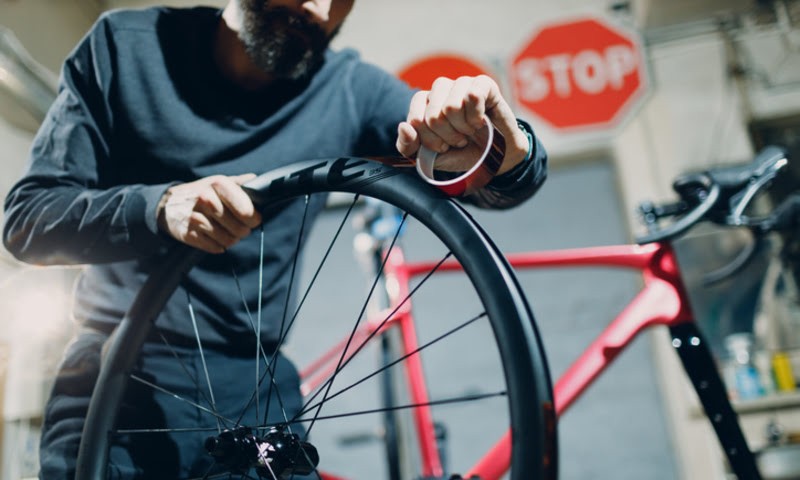
The first is a tubeless rim tape that’s fit for your bike and the terrain you ride on. Make sure to follow the manufacturer’s guidelines when installing the tape, so it fits correctly and doesn’t come off.
There are a few different types of rim tapes available, so find one that’s compatible with your bike and valve system.
Next, you’ll need tubeless valves. Get ones that match your rim tape, and make sure they have enough pressure to hold air when inflated.
You can install the valves through the rim tape by inserting them from the inside and tightening down the retaining nut.
Check the sealant around the valve before inflating to ensure there isn’t any leakage.
Afterward, you’ll need to fit each bead of the tire onto the rim. This may seem counterintuitive, but it’s actually the safest way to do it.
You don’t want to overinflate your tires, and you don’t want them to come off the rim while you’re riding.
Inflate your tires until they’re slightly below the rim of the wheel, then continue inflating them until they’re evenly inflated across the entire surface of the tire.
Once your tires are inflated, make sure they’re properly seated on the rim by gently pushing down on each side of the tire.
Hurray! You have finally installed tubeless tires on your riding bike. A big achievement friends. Celebrate it by going on a ride.
What happens if you get a Flat on a Tubeless Tire
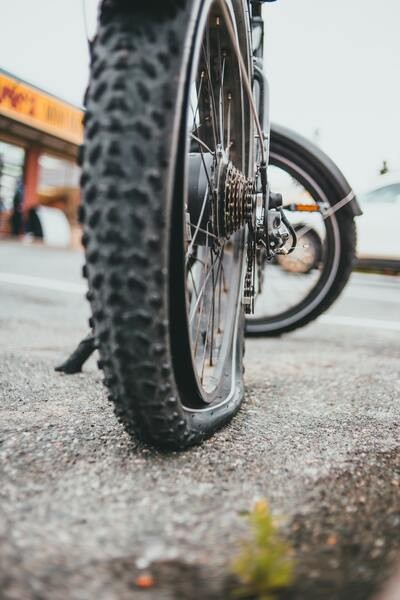
The chances of a flat tire with tubeless tires are quite low. However, the reality is, that it is a technology, and technology is susceptible to flaws.
Occasionally when a tubeless tire has fallen out, it is possible to repair the tire on the road and trail, but this requires carrying sealants.
In recent years, some manufacturers have introduced lighter and more compact repair kits for your bicycle that can be carried around with you at all times. Customers love this complete set as it eases their work to some extent.
Tips & Tricks to Repairing Tubeless Tires
If you’re riding on a bike with tubeless tires, there might be a chance that you’ve encountered a puncture.
Tubeless tires are amazing, but they’re not indestructible – even if they do have some protection against punctures. If you’ve got a puncture, the first thing to do is check to see if you can fix it yourself.
If you can’t, or if the puncture is too big, you’ll need to take your bike to a repair shop.
But before that, one quick and easy way to fix a tubeless tire is with a puncture plug.
Plug the Hole
These plugs come in different shapes and sizes, so they should fit your puncture.
Just remove the damaged part of the tire and insert the plug. Then re-inflate the tire and go! Puncture plugs are a quick and easy solution – there’s no need to take off the tire or even remove the wheel.
Patch It
You can patch the hole using a sealant tube if it is small. Pour a small amount of sealant into the hole and spread it around with your fingers.
Then, press the sealant firmly against the tire and around the hole’s edges. Be sure to cover all of the sealants with plastic wrap before putting the tire back on your bike.
Sew It Up
If the hole is more significant than a sealant tube can fix, you’ll need to sew it up. To do this, use a needle and thread to tie off the end of the sealant tube near the hole.
Then, put stitches close to but not touching the hole’s edge. Be sure to pull tight on the thread after sewing so that no air bubbles get trapped inside the tire.
In addition to punctured tires, your tubeless setup also requires care. This includes rim tape, tubeless valves, air pressure, and sealant.
Check the valves
If they’re getting clogged up with dirt or debris, this can also cause problems with the sealant. Remove any debris that’s blocking the valves and replace any worn valve seals if necessary.
Check the air pressure regularly
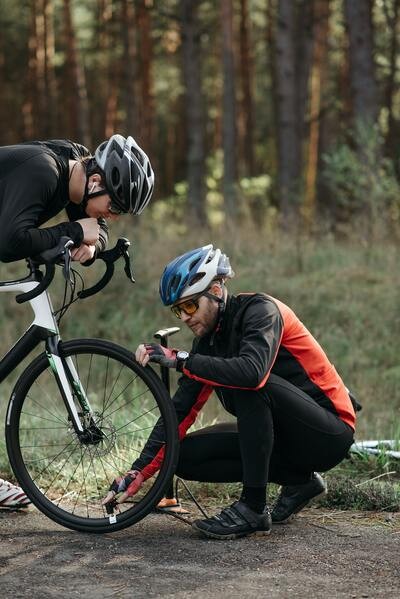
Over-inflating your tires can cause problems with the sealant, as can under-inflating them. Use a reliable gauge to monitor your pressure and make sure it’s consistent across all tires.
Check the rim tape
If there are tears in the rim tape, this can allow air to seep into the tube and cause problems. Replace any torn or worn rim tape.
Reapply sealant as needed
Keep a sealant tube handy if you experience any air leaks or sealant failure problems.
To Wrap Up — Tubeless Bike Tires
Tubeless wheels are a recent trend in bike building that has made the transition from tubular easier and less time-consuming. Tubeless tires have also been a huge hit, with many bicycle companies allying themselves with various tire makers to offer their customers the best deals on these new tires.
However, not everyone is a fan of these special tires, and some riders actually prefer the old-school tubular format.
Hopefully, this article’s pros and cons list has helped you decide whether tubeless tires are right for you or not.
You should choose what suits you best because, at the end of the day, you should be comfortable and satisfied with the experience. Have fun riding! So, I am confident it will work great for you too. If you have any suggestions, feel free to drop us a comment below. Please like, share, and follow our Facebook Page for more guides like this.
Frequently Asked Questions — Tubeless Bike Tires
Do tubeless bike tires go flat?
Tire flattering can occur in tubeless systems fairly rare. The sealing material on your tires will seal the small gaps that keep them moving on a road or trail. Flat beds can be easily obtained even with tubes.
Are tubeless bike tires better?
Are Tubeless bike Tires Good? You can reduce body fat by getting fewer flats and enjoying smooth rides, but it means you spend more money mounting them, and if you are responsible, you will carry an empty tube as before.
What’s the difference between a tubeless tire and a regular tire?
A Tubeless tire is an inflatable tire that has no inside tubes attached to rims without lining it up. Instead of a tube containing air pressure, an airtight ring is built with a tubeless-specific tire developed with a special carbon ring rim.
Do tubeless bike tires need air?
It is obviously not advisable to go too low since tubes are required for maintaining their rims. Too much would cause problems in the end. In other cases, a slam at a higher speed may cause problems as the tire may break.
What is the benefit of tubeless bike tires?
The tubeless tires offer more traction The tubeless MTB wheels provide more smooth rides with a more durable tread. When you ride your bicycle, it’s best to keep the tires as flat as possible and never bounce off objects.
Do tubeless tire bikes require special wheels?
It will take tubes for compatible rims. Almost every car is available now (Shimano, Campagnolo American Classic Stan, etc.) and either has a wheeled without a spoke hole or a wheel strip. For tubeless wheel installation, the basic rim tape must be removed, and the special rim strip must be installed.
What is the point of tubeless tires?
Most riders say that they can no longer use tubes because they get a better experience on trails. Tubeless tires have a very low PSI than tubes – which means there is less tread in the tires to keep it against the ground.
How does a bicycle tubeless tire hold air?
The tire is made to be able to absorb air by itself. It features an air-tight halo-calamity coating on its interior. Together with the seal on the joint of the tire and wheels, it creates an air-tough seal to keep the tire’s air inside the container.
Related:



